2019 浙江杭州师范大学翻译硕士英语考研真题
D.
C.
burst
that
C.
which
B.
offensive
B.
wear off
C.
uneducated
D.
whether
D.
clanked
B.
audience
C.
fractured
C.
progression D.
population
objectionable
Multiple choice (20’)
Mr. Jeffrey had just___________ the shell of the boiled crab and was starting
wear away
The phone call my parents just gave me aroused a(n) ___________ feeling of
wear down
cracked B.
Last week the bishop preached a farewell sermon to a(n) ___________ that have
offending
The physician reassured me that the pain in my leg would ___________ one hour
congregation
I don’t doubt ___________ the plan will be well implemented.
how B.
The old woman had an ___________ habit of emptying ash trays out of her upstairs
I. Vocabulary and grammar (30’)
Section A
Directions: Beneath each sentence there are four words or phrases marked A, B, C
and D. Choose the answer that best completes the sentence. Mark your answers on the
ANSWER SHEET.
1.
to peel it off.
A.
2.
known him very well since he moved here.
A.
3.
A.
4.
window onto my doorstep.
A.
5.
after I took the medicine as I was told.
A.
6.
homesickness in me.
A.
7.
a(n) ___________ to help him proof-read his translation.
collaborator
A.
8.
Although WildAid has been trying to stop the slaughter of sharks for their fins,
current regulations rarely curtail ___________ to the degree needed to restore shark
population.
A.
C.
9.
to running up bills amounting to ___________ their prospective royalties.
A.
C.
10. The ___________ of plastic containers is one of the problems that the local
environmental agency has to deal with.
A.
11. The forecast predicted ___________ weather with rain, sunshine, thunder and wind
and that is just what they have had.
A.
12. The research involves a study of the human heart which leads us through devious
mazes of passion, ___________ it is difficult to find a way.
sharks are hunted
to hunt sharks
The mere prospect of a performance of one of their operas was enough to set them
B.
sharks hunted
the hunting of sharks
ten times the amount of
as ten times as the amount of
ten times the number of B.
the number of ten times D.
intense B.
The professor said that he would translate a Chinese fiction if he could find
intensive
hopeless
forceful
D.
C.
disposition B.
fluctuating B.
C.
ranging D.
D.
wear out
D.
confederate
C.
disposal
D.
dissolution
B.
accomplice
C.
ally
differing
variable
D.
dispersal
�
B.
propagated
veered
fluke
B.
frenzy
C.
muse
D.
knack
wouldn’t he
B.
activated
continuation
B.
hasn’t he
B.
succession
D.
irritated
through which
C.
aggravated
C.
repetition
D.
hadn’t he
C.
didn’t he
D.
contingency
from which
D.
of which
out of which
A.
C.
13. The miserable family have had a ___________ of misfortunes.
A.
14. Mr. White would have been more amicable and civilized if he had changed a little
bit, ___________?
A.
15. In Japanese cities, traffic jams are ___________ because citizens in suburb have
to drive every day to central business areas to work.
A.
16. As an experienced politician, he has to have the ___________ of inspiring
confidence in his listeners.
A.
17. You had the ___________ situation in which Florida had more listed public bathing
beaches than the whole of the United Kingdom.
A.
lubricant
18. Much of what the lecturer said was beyond her comprehension but she managed to
understand the ___________ of his remarks.
A.
19. Little ___________ about his own safety, though he himself was in great danger.
A.
20. One woman was feared dead last night after a helicopter ___________ off course
into an oil platform and ditched into the sea.
A.
D.
Section B
The passage contains TEN errors. Each indicated line contains a maximum of ONE error.
In each case, only ONE word is involved. You should proofread the passage and correct
it in the following way:
Proofreading and error correction (10’)
he may care C.
may he care D.
D.
ludicrous
B.
luculent
did he care
D.
manner
C.
falsified
B.
instigated
C.
tanner
blandished
tact
B.
tenor
he cared
B.
luminous
C.
underline the wrong word and write the correct one in the blank
For a wrong word
provided at the end of the line
For a missing word
mark the position of the missing word with a “Λ” sign and
write the word you believe to be missing in the blank provided at the end of the
line.
For an unnecessary word cross the unnecessary word with a slash “/”and put the
word in the blank provided at the end of the line.
EXAMPLE
When art museum wants a new exhibit,
It never buys things in finished form and hangs (2) It never buys → never
them on the wall. When a natural history museum
wants an exhibition, it must often build it.
(1) When Λ art → an
exhibition → exhibit
(3)
Science was once seen as the stuffy domain of pale male
�
scientists spent far too much of their time in the laboratory
concocting potions in test tubes while avoiding sunlight and
human interaction. Occasionally they would venture out of the
lab to give lectures and impart their wisdom with science students. (2)
(1) __________
__________
(3) __________
(5) __________
But they would rarely confront with the general public. Now,
thanks to the growing number of science festivals, scientists
are engaging with people in unique, innovative—and often surprising—way.
Science communication has evolved in recent years, broken
(4) __________
the age-old tradition of the elite scientist imparting knowledge to
the interested layman. Thanks to the increasing emphasis in
academia on public engagement, it is now expected that learning
about science in an open, democratic process—something shaped
by professionals, but led by the public.
Today the language of science communication is repleted (6) __________
with words such as create, experience, participate and journey.
It all makes participation in public science feel more like a fun
day out as a classroom chore.
Public science events date back to the days of the Ancient
Greeks when the like of Plato and Aristotle would speak in public
(7) __________
(8)
__________
about their theories of science and philosophy. It was the
Edinburgh International Science Festival which coined the term
“science festival” at its incept in 1989. (10)
_________
(9) __________
II. Reading comprehension(40’)
Section 1 Multiple choice (20’)
Directions: In this section there are two passages followed by multiple choice
questions. Read the passages and then mark your answers on the answer sheet.
Passage A
A Scottish novelist, poet, essayist, and travel writer, Robert Louis Stevenson was
born at 8 Howard Place, Edinburgh Scotland, on 13 November 1850. It has been more
than 100 years since his death. Stevenson was a writer who caused conflicting
opinions about his works. On one hand, he was often highly praised for his expert
prose and style by many English-language critics. On the other hand, pothers
criticized the religious themes in his works, often misunderstanding Stevenson’s
own religious beliefs. Since his death a century before, critics and biographers
have disagreed on the legacy of Stevenson’s writing. Two biographers, KF and CP,
wrote a biography about Stevenson with a clear focus. They chose not to criticize
aspects of Stevenson’s personal life. Instead, they focused on his writing, and
gave high praise to his writing style and skill.
The literary pendulum has a swung these days. Different critics have different
opinions towards Robert Louis Stevenson’s works. Though today, Stevenson is one
�
of the most translated authors in the world, his works have sustained a wide variety
of negative criticism throughout his life. it was like a complete reversal of
polarity---from highly positive to slightly less positive to clearly negative; after
being highly praised as a great writer, he became an example of an author with corrupt
ethics and lack of moral. Many literary critics passed his works off as children’s
stories or horror stories, and thought to have little social value in an educational
setting. Stevenson’s works were often excluded from literature curriculum because
of its controversial nature. These debates remain, and many critics still assert
that despite his skill, his literary works still lack moral value.
One of the main reasons why Stevenson’s literary works attracted so much criticism
was due to the genre of his writing. Stevenson mainly wrote adventure stories, which
was part of a popular and entertaining writing fad at the time. Many of us believe
adventure stories are exciting, offers engaging characters, action, and mystery but
ultimately can’t teach moral principles. The plot points are one-dimensional and
rarely offer a deeper moral meaning, instead focusing on exciting and shocking plot
twists and thrilling events. His works were even criticized by fellow authors. Though
Stevenson’s works have deeply influenced Oscar Wilde, Wilde often joked that
Stevenson would have written better works if he wasn’t born in Scotland. Other
authors came to Stevenson’s defence, including Galsworthy who claimed that
Stevenson is a greater writer than Thomas Hardy.
Despite Wilde’s criticism, Stevenson’s Scottish identity was integral part of
his writing works. Although Stevenson’s works were not popular in Scotland when
he was alive, many modern Scottish literary critics claim that Sir Walter Scott and
Robert Louis Stevenson are the most influential writers in the history of Scotland.
While many critics exalt Sir Walter Scott as a literary genius because of his
technical ability, others argue that Stevenson deserves the same recognition for
his natural ability to capture stories and characters in words. Many of Scott’s
works were taken more seriously as literature for their depth due to their tragic
themes, but fans of Stevenson praise his unique style of story-telling and capture
of human nature. Stevenson’s works, unlike other British authors, captured the
unique day to day life of average Scottish people. Many literary critics point to
this as a flaw of his works. According to the critics, truly important literature
should translate local culture and stories. However, many critics praise the local
taste of his literature. To this day, Stevenson’s works provide valuable insight
to life in Scotland during the 19th century.
Despite much debate of Stevenson’s writing topics, his writing was not the only
source of attention for critics. Stevenson’s personal life often attracted a lot
of attention from his fans and critics alike. Some even argue that his personal life
eventually outshone his writing. Stevenson had been plagued with health problems
his whole life, and often had to live in much warmer climates than the cold, dreary
weather of Scotland in order to recover, so he took his family to a south pacific
island Samoa, which was a controversial decision at that time. However, Stevenson
didn’t regret the decision. The sea air and thrill of adventure complimented the
themes of his writing, and for a time restored his health. From there, Stevenson
�
gained a love of travelling, and for nearly three years he wandered the eastern and
central Pacific. Much of his works reflected this love of travel and adventure that
Stevenson experienced in the Pacific islands. It was as a result of this biographical
attention that the feeling grew that interest in Stevenson’s life had taken the
place of interest in his works. Whether critics focus on his writing subjects, his
religious beliefs, or his eccentric lifestyle of travel and adventure, people from
the past and present have different opinions about Stevenson as an author. Today,
he remains a controversial yet widely popular figure in western literature.
1. Stevenson’s biographers KF and CP
A. underestimated the role family played in Stevenson’s life.
B. overestimated the writer’s works in the literature history.
C. exaggerated Stevenson’s religious belief in his works.
D. elevated Stevenson’s role as a writer.
.
2. The main point of the second paragraph is
A. the public give a more fair criticism to Stevenson’s works.
B. recent criticism has been justified.
C. the style of Stevenson’s works overweigh his faults in his life.
D. Stevenson’s works’ drawback is lack of ethical nature.
.
3. According to the author, adventure stories
A. do not provide plot twists well.
B. cannot be used by writers to show moral values.
C. are more fashionable art form.
D. can be found in other’s works but not in Stevenson’s.
.
4. What does the author say about Stevenson’s works?
A. They describe the life of people in Scotland.
B. They are commonly regarded as real literature.
C. They were popular during Stevenson’s life.
D. They transcend the local culture and stories.
5. The lifestyle of Stevenson
.
A. made his family envy him so much.
B. should be responsible for his death.
C. gained more attention from the public than his works.
D. didn’t well prepare his life in Samoa.
Passage B
In Britain one of the most dramatic changes of the Industrial Revolution was the
harnessing of power. Until the reign of GeorgeⅢ(1760-1820), available sources of
power for work and travel had not increased since the Middle Ages. There were three
sources of power: animal or human muscles; the wind, operating on sail or windmill;
�
and running water. Only the last of these was suited at all to the continuous
operating of machines, and although waterpower abounded in Lancashire and Scotland
and ran grain mills as well as textile mills, it had one great disadvantage: streams
flowed where nature intended them to, and water-driven factories had to be located
on their banks whether or not the location was desirable for other reasons.
Furthermore, even the most reliable waterpower varied with the seasons and
disappeared in a drought. The new age of machinery, in short, could not have been
born without a new source of both movable and constant power.
The source had long been known but not exploited. Early in the eighteenth century,
a pump had come into use in which expanding steam raised a piston in a cylinder,
and atmospheric pressure brought it down again when the steam condensed inside the
cylinder to form a vacuum. This “atmospheric engine”, invented by Thomas Savery
and vastly improved by his partner, Thomas Newcomen, embodied outside the coal mines
for which it had been designed. In the 1760s, James Watt perfected a separate
condenser for the steam, so that the cylinder did not have to be cooled at every
stroke; then he devised a way to make the piston turn a wheel and thus convert
reciprocating (back and forth) motion into rotary motion. He thereby transformed
an inefficient pump of limited use into a steam engine of a thousand uses. The final
step came when steam was introduced into the cylinder to drive the piston backward
as well as forward, thereby increasing the speed of the engine and cutting its fuel
consumption.
Watt’s steam engine soon showed what it could do. It liberated industry from
dependence on running water. The engine eliminated water in the mines by driving
efficient pumps, which make possible deeper and deeper mining. The ready
availability of coal inspired William Murdoch during the 1790s to develop the first
new form of nighttime illumination to be discovered in a millennium and a half. Coal
gas rivaled smoky oil lamps and flickering candles, and early in the new century,
well-to-do Londoners grew accustomed to gas-lit houses and even streets. Iron
manufacturers, which had starved for fuel while depending on charcoal, also
benefited from ever-increasing supplies of coal: blast furnaces with steam-powered
bellows turned out more iron and steel for the new machinery. Steam became the motive
force of the industrial revolution as coal and iron ore were the raw materials.
By 1800 more than a thousand steam engines were in use in the British Isles, and
Britain retained a virtual monopoly engine production until the 1830s. Steam power
did not merely spin cotton and roll iron; early in the new century, it also multiplied
ten times over the amount of paper that a single worker could produce in a day. At
the same time, operators of the first printing presses run by steam rather than by
hand found it possible to produce a thousand pages in an hour rather than thirty.
Steam also promised to eliminate a transportation problem not fully solved by either
canal boats or turnpikes could cross the hills, but the roadbeds could not stand
up under great weights. These problems needed still another solution, and the
ingredients for it lay close at hand, in some industrial regions, heavily laden
wagons, with flanged wheels, where being hauled by horses along metal rails; and
the stationary steam engine was puffing in the factory and mine. Another generation
�
passed before inventors succeeded in combining these ingredients, by putting the
engine on wheels and the wheels on the rails, so as to provide a machine to take
the place of the horse. Thus the railroad age sprang from what had already happened
in the eighteenth century.
6. Which of the sentences below best expresses the essential information in the first
passage?
A. Running water was the best power source for factories since it could keep machines
operating continuously, but since it was abundant only in Lancashire and Scotland,
most mills and factories that were located elsewhere could not be water driven.
B. The disadvantage of using waterpower is that streams do not necessarily flow in
places that are the most suitable for factories, which explains why so many
water-powered grain and textile mills were located in undesirable places.
C. Since machines could be operated continuously only where running water was
abundant, grain and textile mills, as well as other factories, tended to be located
only in Lancashire and Scotland.
D. Running water was the only source of power that was suitable for the continuous
operation of machines, but to make use of it, factories had to be located where the
water was, regardless of whether such locations made sense otherwise.
7. According to paragraph 2, the “atmospheric engine” was slow because
A. it had been designed to be used in coal mines
B. the cylinder had to cool between each stroke
C. it made use of expanding steam to raise the piston in its cylinder
D. it could be operated only when a large supply of fuel was available
.
.
8. In paragraph 3, the author mentions William Murdoch’s invention of a new form
of nighttime illumination in order to
A. indicate one of the important developments made possible by the introduction of
Watt’s steam engine
B. make the point that Watt’s steam engine was not the only invention of importance
to the Industrial Revolution
C. illustrate how important coal was as a raw material for the Industrial Revolution
D. provide an example of another eighteenth-century invention that used steam as
a power source
9. According to paragraph 4, which of the following statements about steam engines
is true?
A. They were used for the production of paper but not for printing.
B. By 1800, significant numbers of them were produced outside of Britain.
C. They were used in factories before they were used to power trains.
D. They were used in the construction of canals and turnpikes.
10. According to paragraph 4, providing a machine to take the place of the horse
�
involved combining which two previously ingredients?
A. Turnpikes and canals
B. Stationary steam engines and wagons with flanged wheels
C. Metal rails in road beds and wagons capable of carrying heavy loads
D. Canal boats and heavily laden wagons
Section 2 Answering questions(20’)
Directions: Read the following two passages and then answer IN COMPLETE SENTENCES
the questions which follow each passage. Use only information from the passage you
have just read and write your answers on the answer sheet.
Questions 1-3
Americans today choose among more options in more parts of life than has ever been
possible before. To an extent, the opportunity to choose enhances our lives. It is
only logical to think that if some choices are good, more is better; people who care
about having infinite options will benefit from them, and those who don’t can always
just ignore the 273versions cereal they have never tried. Yet recent research
strongly suggests that, psychological, this assumption is wrong, with 5% lower
percentage announcing they are happy. Although some choices are undoubtedly better
than none, more is not always better than less.
Recent research offers insight into why many people end up unhappy rather than
pleased when their options expand. We began by making a distinction between
“maximisers” (those who always aim to make the best possible choice) and
“satisfiers” ( those who aim for good enough whether or not better selection might
be out there).
In particular, we composed a set of statements---the Maximisation Scale---to
diagnose people’s propensity to maximize. Then we had several thousand people rate
themselves from 1 to 7 (from completely disagree to completely agree) on such
statements as “I never settle for second best.”We also evaluated their sense of
satisfaction with their decisions. We didn’t define a sharp cutoff to separate
maximisers from satisfiers, but in general, we think of individuals whose average
scores are higher than 4 (the scale’s midpoint) as maximisers and those whose scores
are lower than the midpoint as satisfiers. People who score highest on the test---the
greatest maximisers---engage in more product comparisons than the lowest scorers,
both before and after they make purchasing decisions, and they take longer to decide
what to buy. When satisfiers find an item that meets their standards, they stop
looking. But maximisers exert enormous effort reading labels, checking out consumer
magazines and trying new products. They also spend more time comparing their
purchasing decisions with those of others.
We found that the greatest maximisers are the least happy with the fruits of their
efforts. When they compare themselves with others, they get little pleasure from
finding out that they did better and substantial dissatisfaction from finding out
that they did worse. They are more prone to experiencing regret after a purchase,
and if their acquisition disappoints them, their sense of well-being takes longer
�
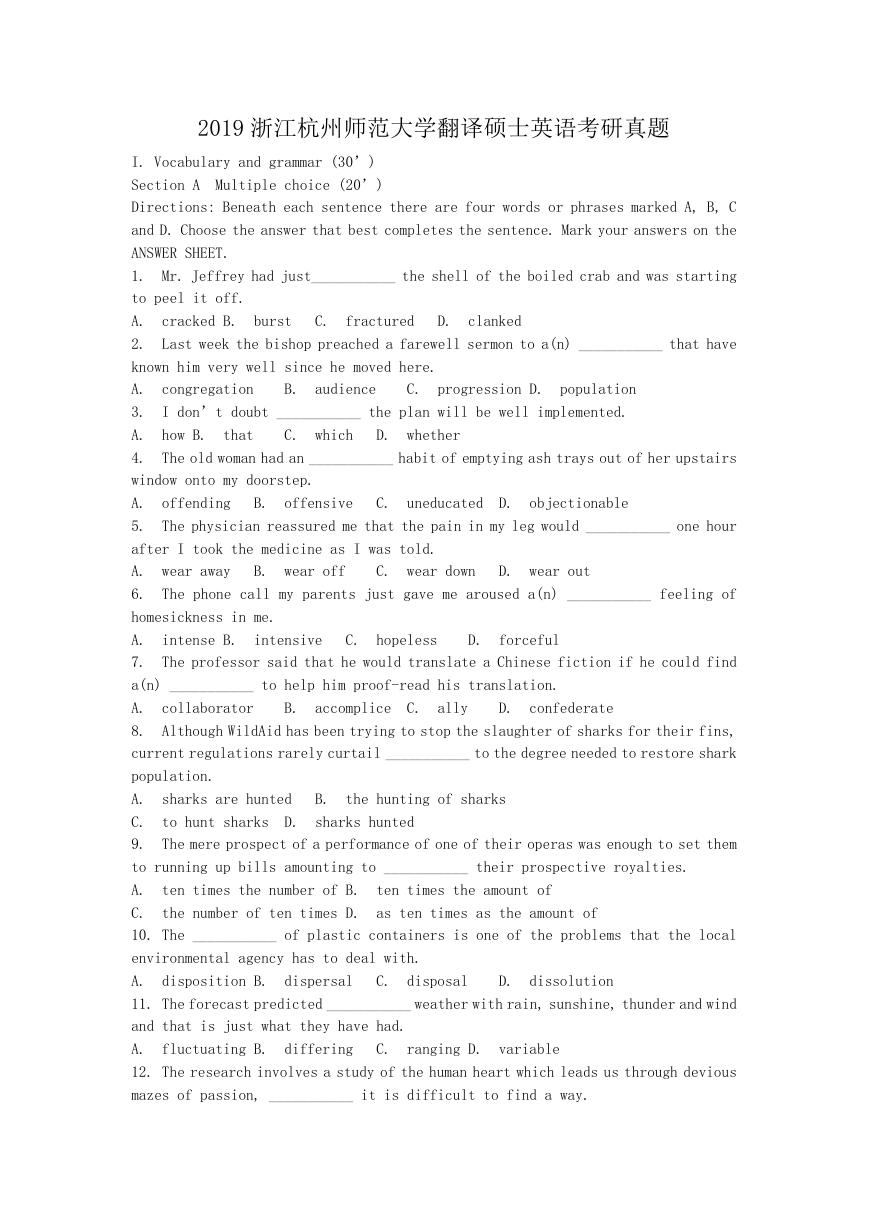
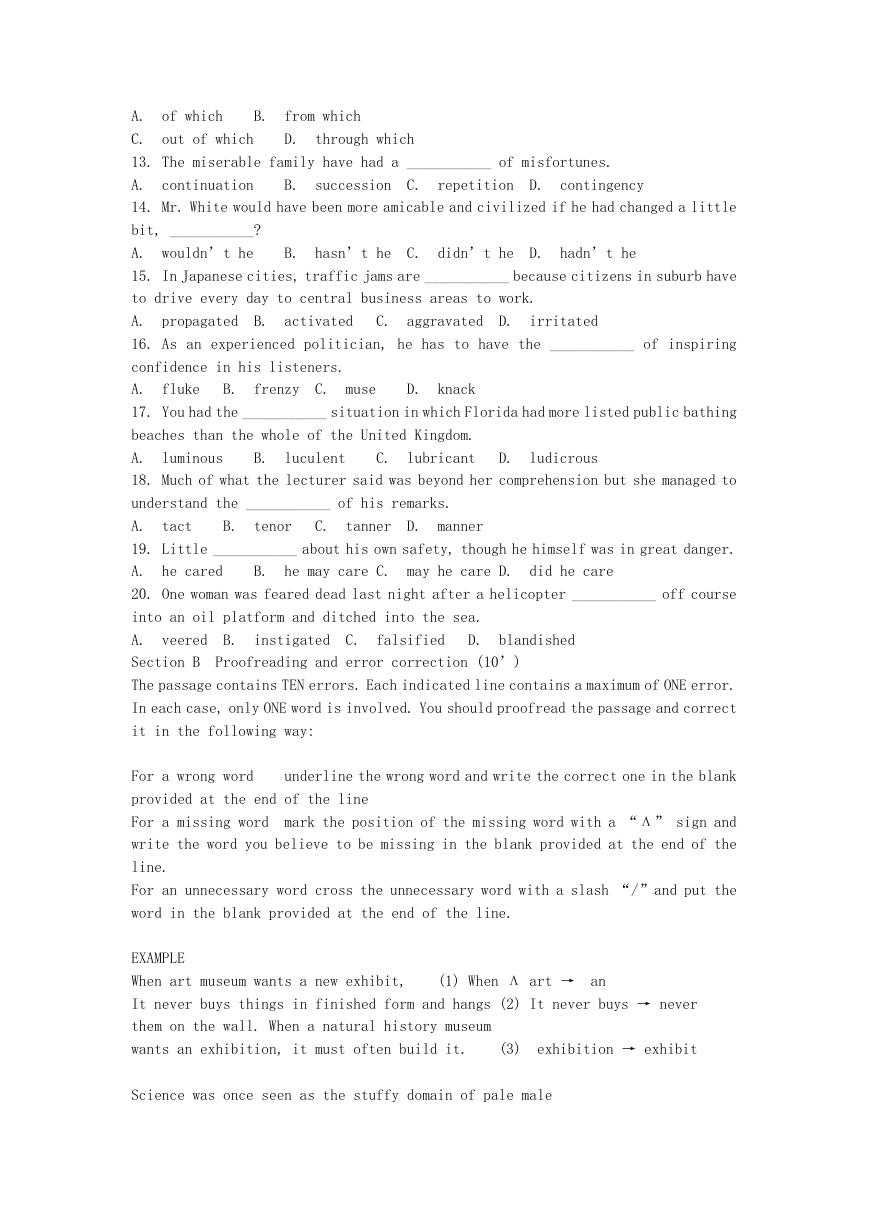
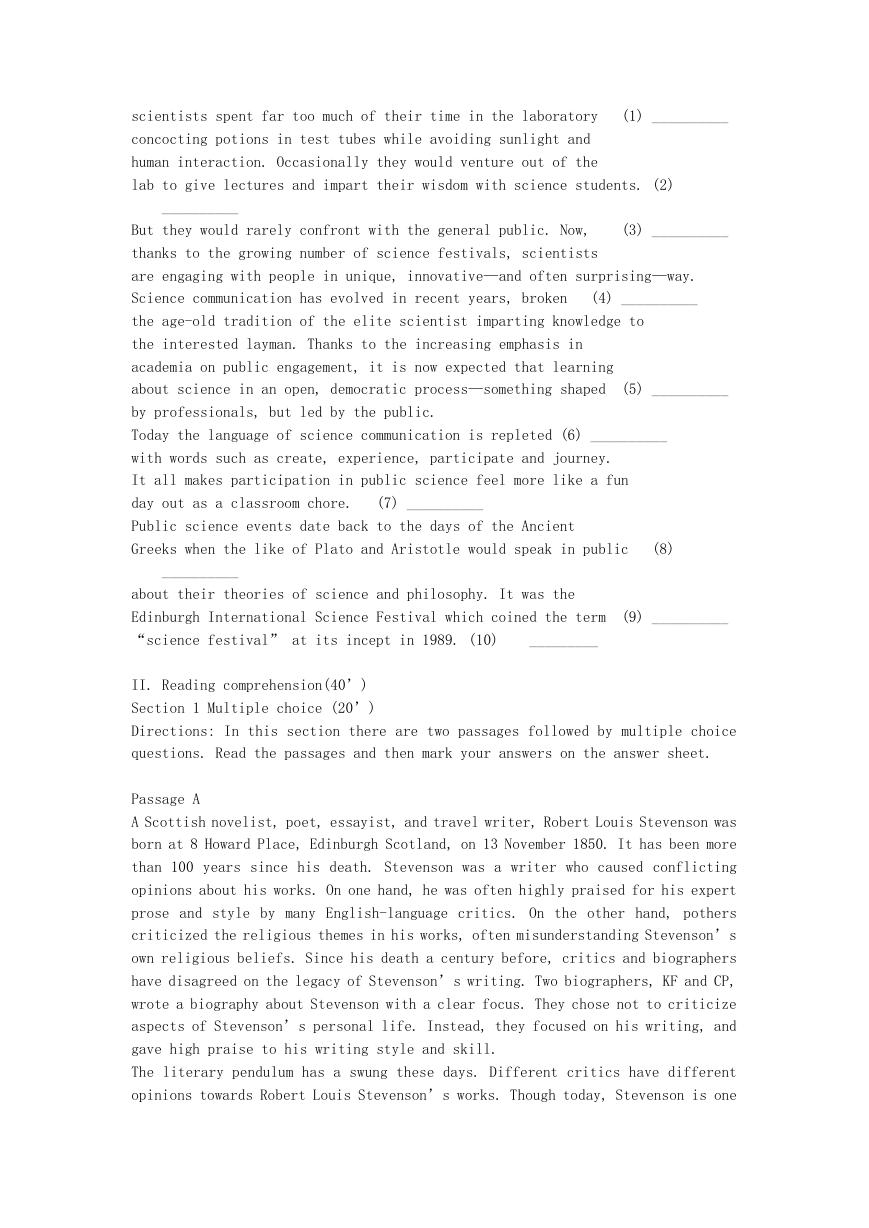
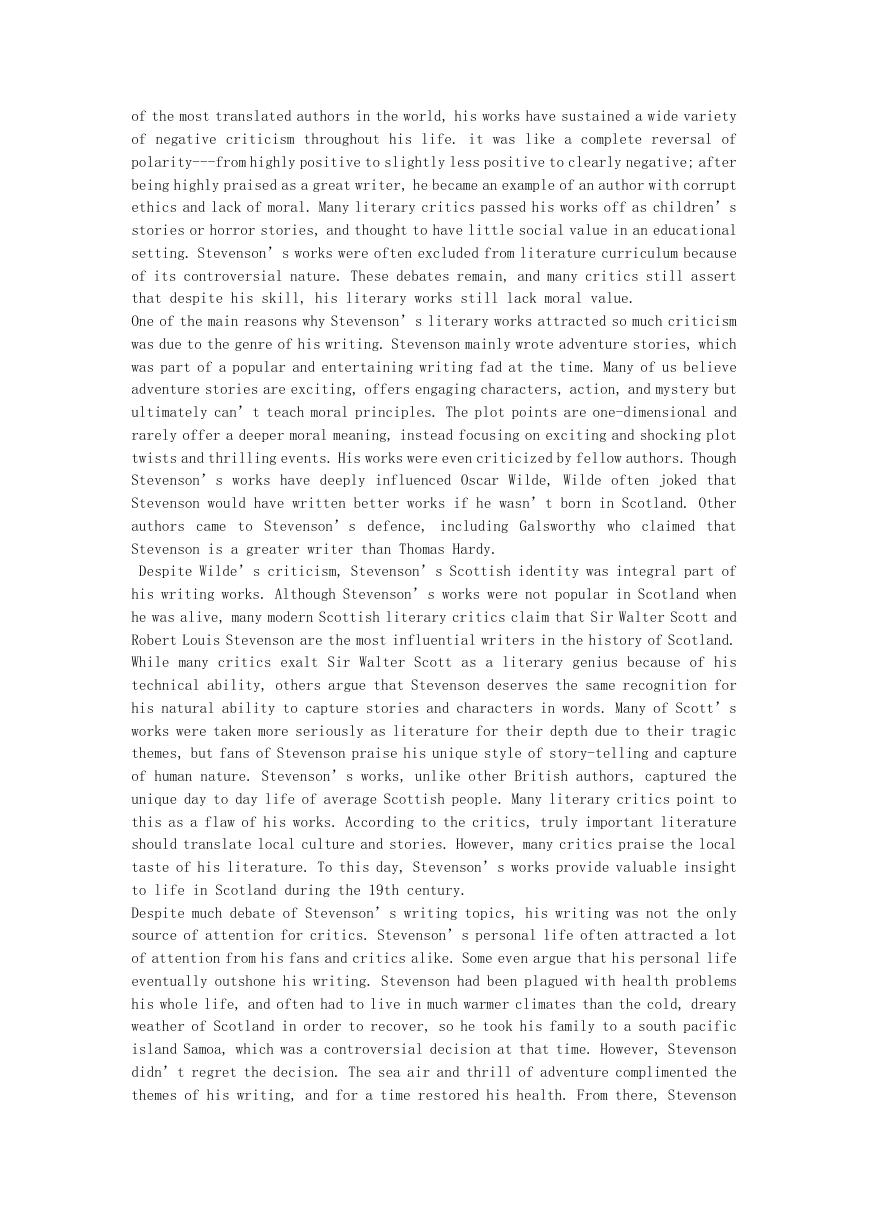
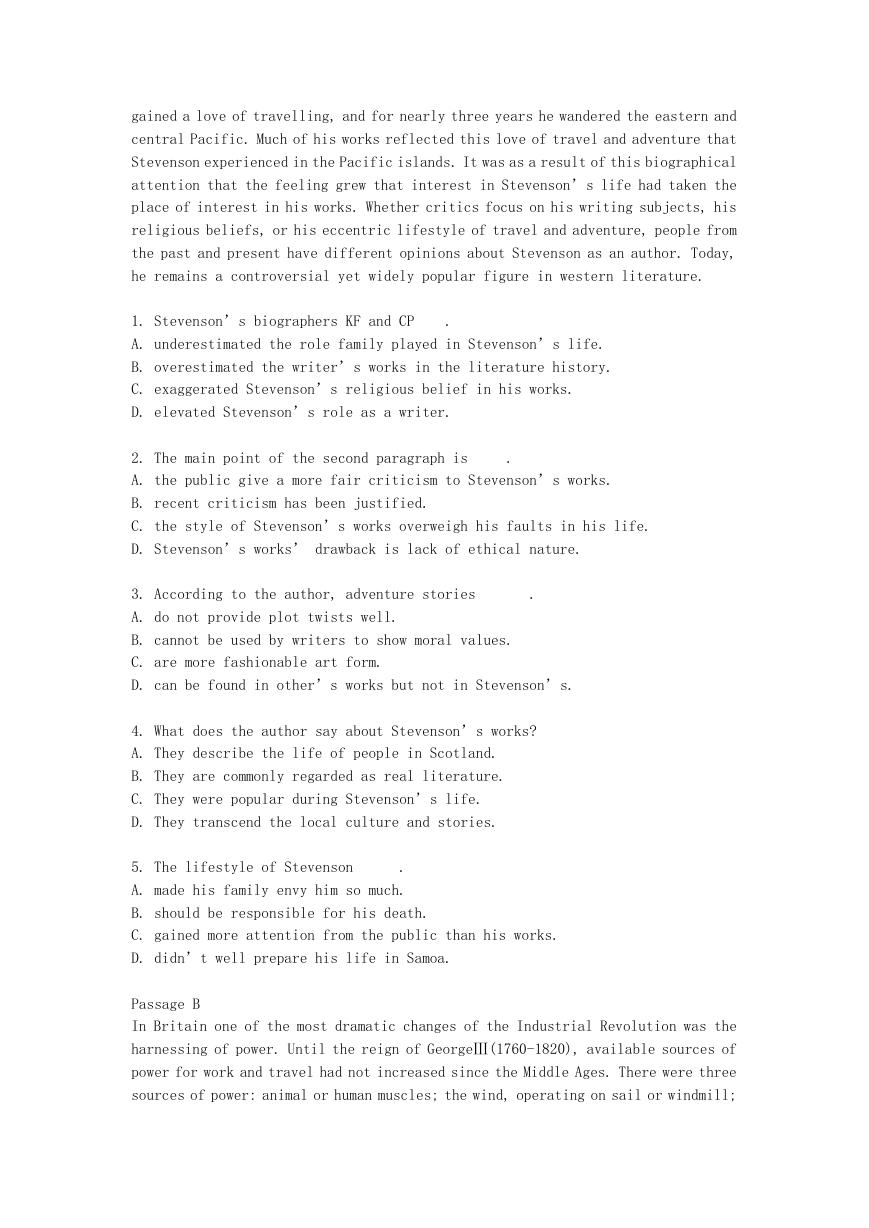

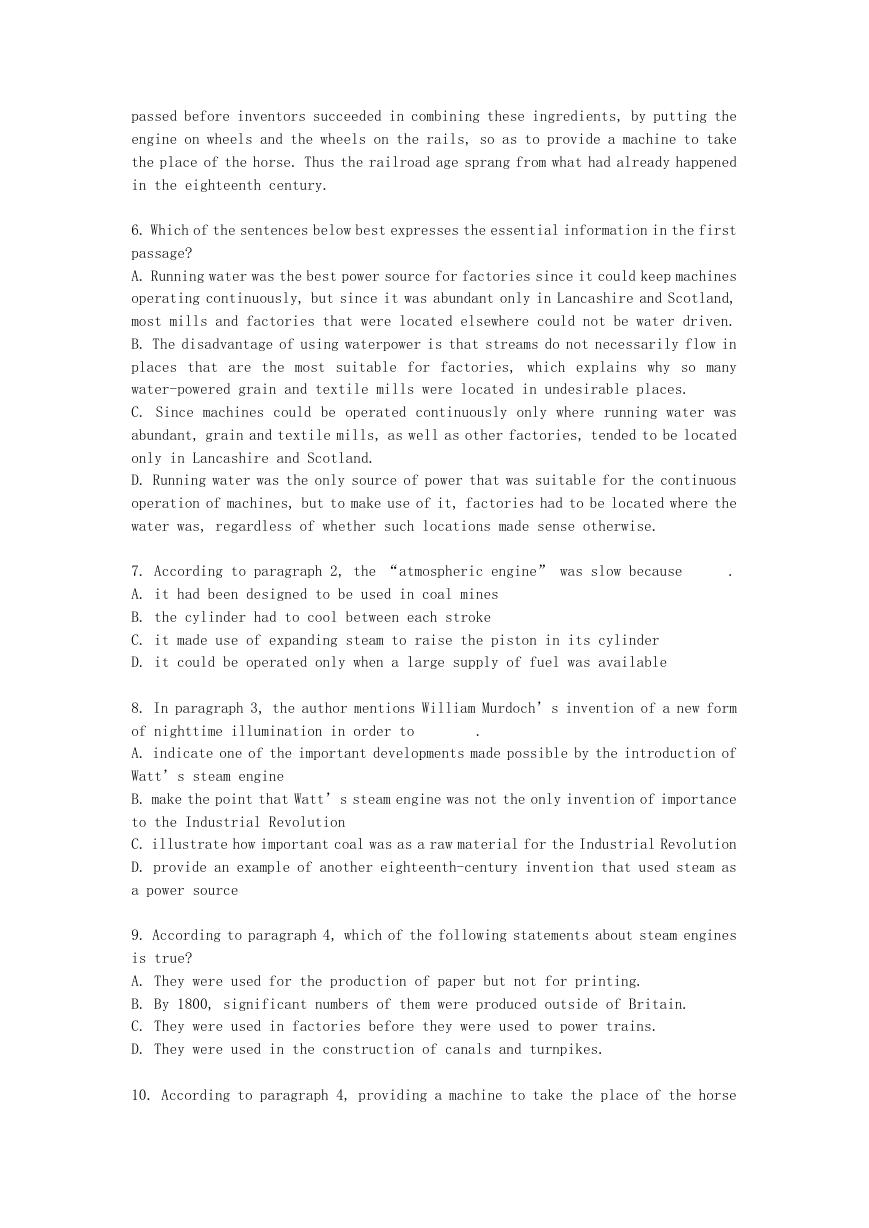
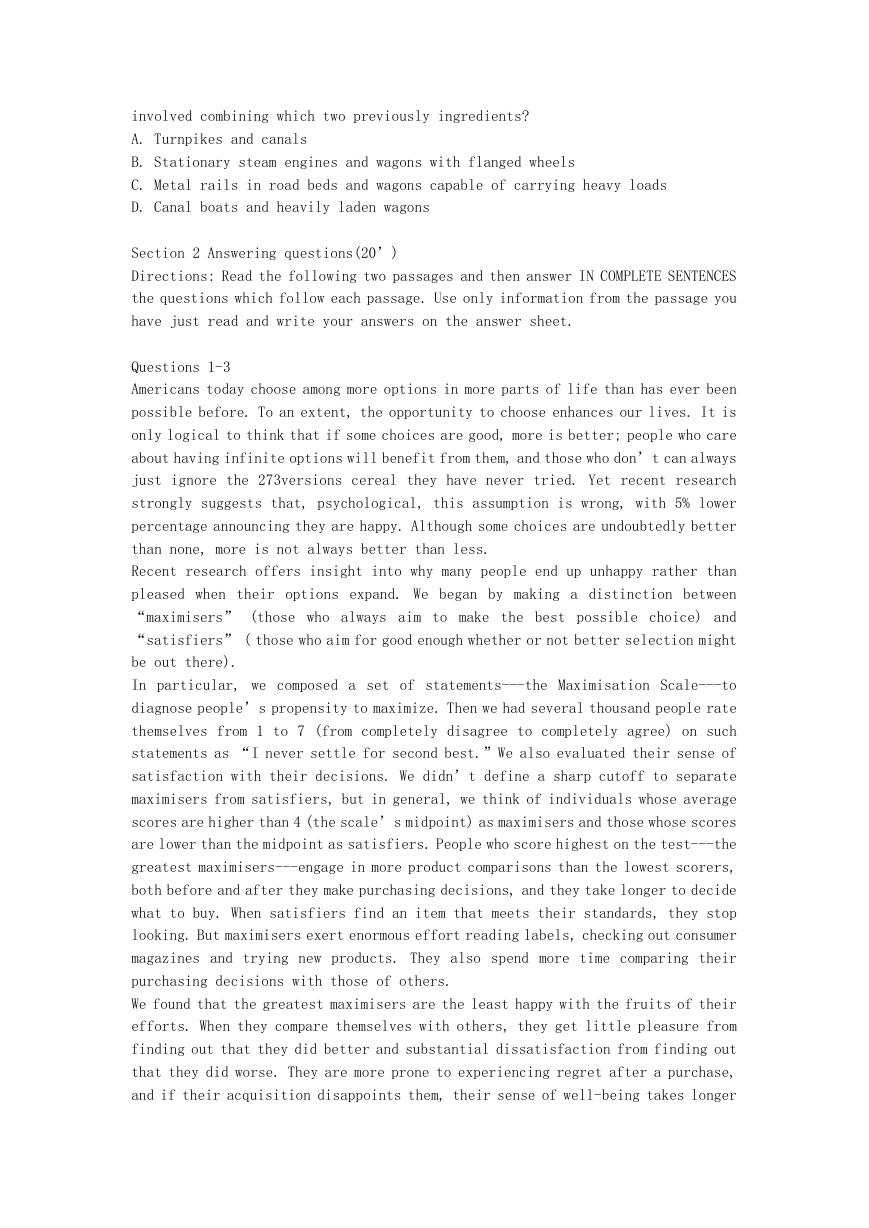








 2023年江西萍乡中考道德与法治真题及答案.doc
2023年江西萍乡中考道德与法治真题及答案.doc 2012年重庆南川中考生物真题及答案.doc
2012年重庆南川中考生物真题及答案.doc 2013年江西师范大学地理学综合及文艺理论基础考研真题.doc
2013年江西师范大学地理学综合及文艺理论基础考研真题.doc 2020年四川甘孜小升初语文真题及答案I卷.doc
2020年四川甘孜小升初语文真题及答案I卷.doc 2020年注册岩土工程师专业基础考试真题及答案.doc
2020年注册岩土工程师专业基础考试真题及答案.doc 2023-2024学年福建省厦门市九年级上学期数学月考试题及答案.doc
2023-2024学年福建省厦门市九年级上学期数学月考试题及答案.doc 2021-2022学年辽宁省沈阳市大东区九年级上学期语文期末试题及答案.doc
2021-2022学年辽宁省沈阳市大东区九年级上学期语文期末试题及答案.doc 2022-2023学年北京东城区初三第一学期物理期末试卷及答案.doc
2022-2023学年北京东城区初三第一学期物理期末试卷及答案.doc 2018上半年江西教师资格初中地理学科知识与教学能力真题及答案.doc
2018上半年江西教师资格初中地理学科知识与教学能力真题及答案.doc 2012年河北国家公务员申论考试真题及答案-省级.doc
2012年河北国家公务员申论考试真题及答案-省级.doc 2020-2021学年江苏省扬州市江都区邵樊片九年级上学期数学第一次质量检测试题及答案.doc
2020-2021学年江苏省扬州市江都区邵樊片九年级上学期数学第一次质量检测试题及答案.doc 2022下半年黑龙江教师资格证中学综合素质真题及答案.doc
2022下半年黑龙江教师资格证中学综合素质真题及答案.doc